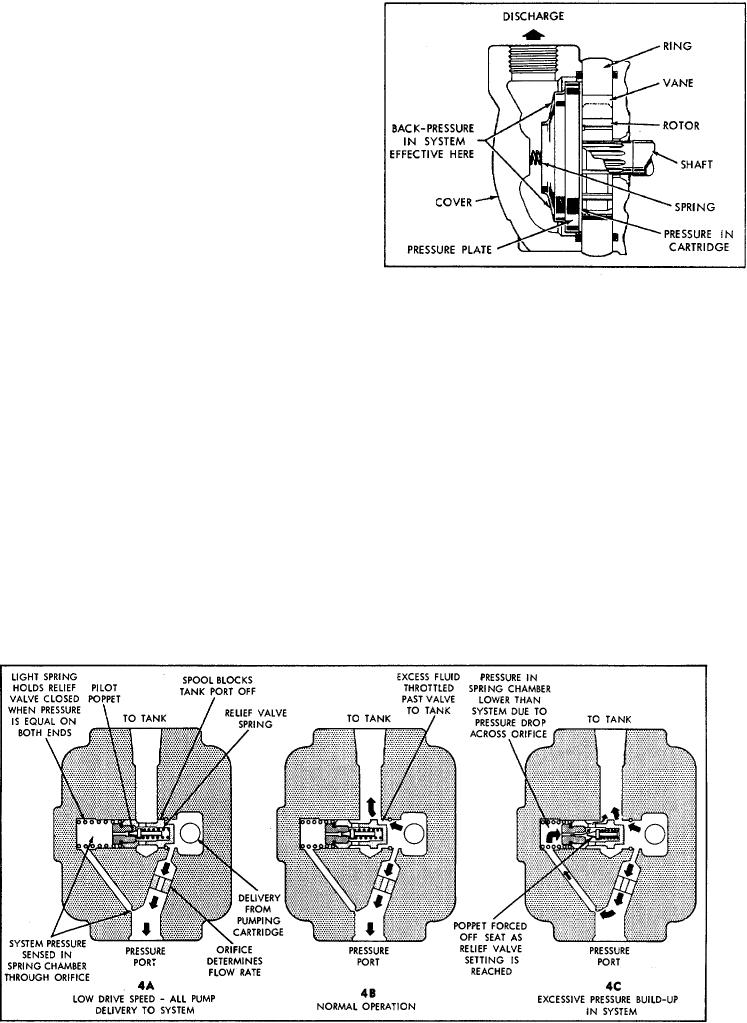
This fluid is trapped between the vanes and carried past
the large diameter or dwell section of the ring. As the
outlet section is approached, the ring diameter decreases
and the fluid is forced out into the system. System
pressure is fed under the vanes, assuring their sealing
contact against the ring during normal operation.
B. HYDRAULIC BALANCE
The pump ring is shaped so that the two pumping
chambers are formed diametrically opposed.
Thus,
hydraulic forces which would impose side loads on the
shaft cancel each other out.
C. PRESSURE PLATE
The pressure plate seals the pumping chamber as shown in
Figure 3
Figure 3.
A light spring holds the plate against the
cartridge until pressure builds up in the system. System
This condition usually occurs only at low drive speeds.
pressure is effective against the area at the back of the
The large spring chamber is connected to the pressure
plate, which is larger than the area exposed to the pumping
port through an orifice. Pressure in this chamber equalizes
cartridge. Thus, an unbalanced force holds the plate
pressure at the other end of the relief valve spool and the
against the cartridge, sealing the cartridge and providing
light spring holds the spool closed.
Pump delivery is
the proper running clearance for the rotor and vanes.
blocked from the tank port by the spool land.
D. FLOW CONTROL AND RELIEF VALVE
3. When pump delivery is more than the flow rate
determined by the orifice plug, a pressure build-up forces
1. Maximum pump delivery and maximum system
the spool open against the light spring.
Excess fluid is
pressure are determined by the integral flow control and
throttled past the spool to the tank port as shown in Figure
'relief valve in a special outlet cover used on some V200
4B.
pumps. This feature is illustrated schematically in Figure
4. An orifice in the cover limits maximum flow. A pilot-
4. If pressure in the system builds up to the relief
operated type relief valve shifts to divert excess fluid de-
valve setting (Figure 4C), the pilot poppet is forced off its
livery to tank, thus limiting the system pressure to a
seat. Fluid in the large spring chamber flows through the
prescribed maximum.
spool and out to tank.
This flow causes a pressure
differential on the spool, shifting it against the light spring.
2. Figure 4A shows the condition when the total pump
All pump delivery is thus permitted to flow to tank.
delivery can be passed through the orifice.
Figure 4
5

